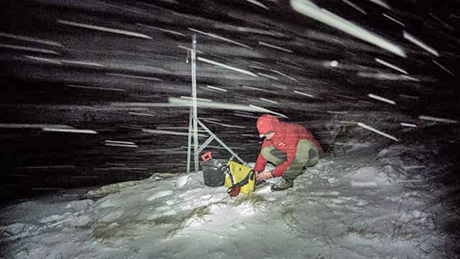Navigation auf uzh.ch
Navigation auf uzh.ch

Philipp Schneider’s work revolves around the Tiefenbach stream and Tiefen Glacier in Canton Uri. There he is investigating the alpine groundwater that can be found above the tree line at elevations of more than 2,000 meters in unconsolidated sediments such as scree and river or glacier bedload. So far, despite the fact that 23 percent of the area of Switzerland is above the tree line, little is known about the quality of this water and the seasonal storage patterns it follows. Given that so little use has been made of alpine groundwater in Switzerland, it has not been a focus of research either.
But why is it suddenly so important to monitor alpine groundwater? Isn’t it safe to assume that with so little human influence at over 2,000 meters, the groundwater at this altitude will be pure?
On the contrary. In summer 2012, UZH researchers doing a pilot study on the Tiefen Glacier discovered surprisingly high temperatures and major variations in the electrical conductivity of alpine groundwater. “Conductivity is an indicator of the amount of material dissolved in the water,” explains Philipp Schneider, who used these findings as an opportunity to collect more precise hydrochemical data on the body of groundwater found in unconsolidated sediments in alpine terrain.
The researchers now want to conduct a qualitative and quantitative study of bodies of groundwater in unconsolidated sediments around the Tiefen Glacier over several years, including mapping and geophysical measurements. They are monitoring temperature, electrical conductivity, water level, and runoff locally over the entire year. In the snow-free period they will also be conducting experiments by taking targeted samples to determine the quality and origin of the groundwater. This way the team will be able to find out whether climate change is impacting water quality.
Philipp Schneider also hopes his work will make a major contribution to our understanding of the dynamics of water storage and water quality in the Swiss Alps. Ultimately the data he and his team are gathering should enable the seasonal changes in both groundwater regeneration and the storage of groundwater in unconsolidated sediments to be better integrated into hydrological models.